
BY JAY STRUTH
One of the things that stands out most for Norbert Boulet about the war is the fact that his squadron had a really good navigator.
“Our navigator was from Winnipeg, and he was really good,” remembered Boulet of his time on a bomber squadron in WWII. “He got us home every time.”
Norbert, who turns 99 in January, was born in Dunrea, and moved north with his family to Swan Lake, Manitoba, where they farmed for most of his childhood, before eventually settling further south in Somerset.
Boulet worked the family farm till he was 23, and then enlisted in the military in the summer of 1942.
“A whole bunch of us went in as gunners,” he said. “We went for our training, and we were stationed in Brandon where the airport is. The manning depot was in the arena.”
The Air Force trainees were then sent northeast of Portage, where they took their course for gunnery, followed by a two-week leave.
“Then we went overseas. We were lucky,” said Boulet. “We sailed to Scotland from Halifax on the Queen Elizabeth, the biggest ship in the world. It was a beautiful ship, and it was quite an experience. Submarines couldn’t catch up to it.”
The Queen Elizabeth arrived at the River Clyde in Scotland in April of 1943, and its passengers were ferried ashore before being transported by train to England.
Later that spring Boulet would find himself flying dangerous bombing missions over Germany. He was now a rear gunner for the Royal Canadian Air Force (RCAF) 6 Group, and would join the 420 (nicknamed Snowy Owl) Squadron.
Origins of RCAF 6 Group
The Canadian government shared the British view with regard to strategic bombing, and the RCAF assigned more squadrons to Bomber Command than it did to Fighter Command or to Coastal Command.
In all, 15 Canadian squadrons were formed within Bomber Command in Great Britain. This significant number of squadrons helped Canada ensure the autonomy of its national air force.
On January 1, 1943, the RCAF squadrons were brought together as 6 Group, under the command of Air Rear-Marshal G.E. Brookes, with its headquarters at Allerton Hall, a Yorkshire mansion.
During its first 12 months, 6 Group grew from 8 to 13 squadrons; flew 7,355 missions and dropped 13,630 tons of bombs.
The additional training demanded by the Canadian commanders and the experience gained through perilous missions over Germany allowed 6 Group to substantially improve its performance and reduce its loss ratio to a level equivalent to that of other Bomber Command groups. The efficiency of ground crews and the quality of their maintenance work was considered outstanding.
331 Wing, which included Boulet’s 420 Squadron and RCAF No. 424 and 425 Squadron, was detached from 6 Group in May of 1943 to take part in Operation Husky, the Allies’ invasion of Sicily. Men received shots for tropical diseases, and their aircraft, Vickers Wellington bombers, were especially prepared to deal with dust, sand and heat.
According to Boulet, one of 420 Squadron’s main jobs in Sicily was to fly up and down the coastline jamming enemy radar signals.
“There was a boat there that was loaded with tools and soldiers, and so on, and we were warned to stay away from that thing, because they’d shoot you down,” he recalled of one of his first missions in Sicily. “We were going back and forth, with special equipment, to jam the radar of the Germans. If a German fighter plane would have come, we’d have been cooked goose. But we’d jam the radar so they couldn’t tell that there were planes there. And we were lucky. Of course we did all our bombing at night. It was all done at night, when it was dark.”
After Sicily, 420 Squadron became operational in North Africa as part of 331 Wing.
“Our plane was chosen for North Africa, because I guess we had more experience than the rest,” said Boulet. “We flew to North Africa, and we flew along the coast. We were actually due to change to a four-engine job, with two gunners. But we were sent to Africa first.”
By June of 1943, most RAF and RCAF Bomber Squadrons in England were in the process of converting to Halifax and/or Lancaster aircraft, but the three Squadrons designated for 331 Wing were still flying Wellington B. Mk. III aircraft. The three RCAF Squadrons were then re-equipped with Wellington B. Mk. X (Tropical) aircraft for the mission to North Africa.
The Vickers Wellington B. Mk. X was the final development of that airframe. They were fitted with Bristol Hercules XVIII, air cooled engines, and light metal alloy construction. The maximum speed of the B. Mk. X was 255 mph, with a cruising speed of 205 mph. Its range was 1,500 miles, with a bomb load of 8,000 lbs.
The “Snowy Owls” were based on an airstrip scraped out of a barren plain, some 22 kilometres southwest of Kairouan in northern Tunisia’s inland desert.
Rains often turned the rudimentary landing strips and surrounding tent cities into a sea of sticky mud. Through all of this the bombers had to be maintained in the open. This was a ground crew’s nightmare.
Somehow the ground crews and aircrews were able to continue their jobs. In fact, the serviceability of the aircraft was often extremely high, considering there would be stretches of ops every night for more than a week straight.
Conditions were difficult and varied for the airmen in North Africa. All personnel were accommodated and messed in tents, and the men had to often scrounge for all variety of life’s necessities, such as bed frames, cooking/heating stoves, latrine construction materials, and the like.
Temperatures ranged from below freezing to nearly 50 C. When it was dry, strong desert winds would blow down tents and cause zero visibility sand storms. Sand and dust would fill every crack and orifice, making breathing and eating difficult.
Meals were often supplemented by local produce, meats, and even wild desert lilies. Flies, scorpions and snakes were in abundance, and there was a good chance of contracting malaria, dysentery, jaundice and other sicknesses.
Boulet and his squadron spent several months in North Africa before being called back to London sometime before Christmas 1943. He would spend the next few months in hospital.
“Three days before we were sailing (back to London) a lot of us got jaundice,” said Boulet, who had also picked up pneumonia by the time he landed back in England. “I went to London, and got to see a Canadian doctor. So they put me in the hospital just south of London. They were all Canadian doctors and nurses there.”
Boulet remembers being in bed for about four weeks. He even spent Christmas and New Year’s in bed, he recalled.
“Then they moved us up quite a long way from London,” he said. “Then again, that was with all our Canadian nurses, and doctors, and Canadian cooks too, which helped. I was in there for close to three months. And then I had a month’s leave coming to me, because we never had any leave in Africa.”
After his leave, Boulet was posted to the Isle of Man. He has pleasant memories of his final post of the war there, mostly because the food was better than anything he’d had in months.
“There were two big Air Force bases there (the Isle of Man), and I was posted to the one closest to Douglas,” he remembered fondly. “But I still had water in my lungs there, so they sent me back to Canada.”
Boulet was shipped back home in 1944 on the Queen Mary, the Queen Elizabeth’s sister ship.
He’d flown in 44 missions during the war, and the Snowy Owl was now returning safely home. He had been chosen for some of the most dangerous duties of the war, and he survived, ready to start his life again in southern Manitoba.
The successes of the Allied Bomber Command in WWII were purchased at terrible cost. Of the 120,000 who served, 55,573 were killed, including over 10,000 Canadians. Of those who were flying at the beginning of the war, only ten percent survived.
It is a loss rate comparable only to the worst slaughter of the First World War trenches. Only the Nazi U-Boat force suffered a higher casualty rate.
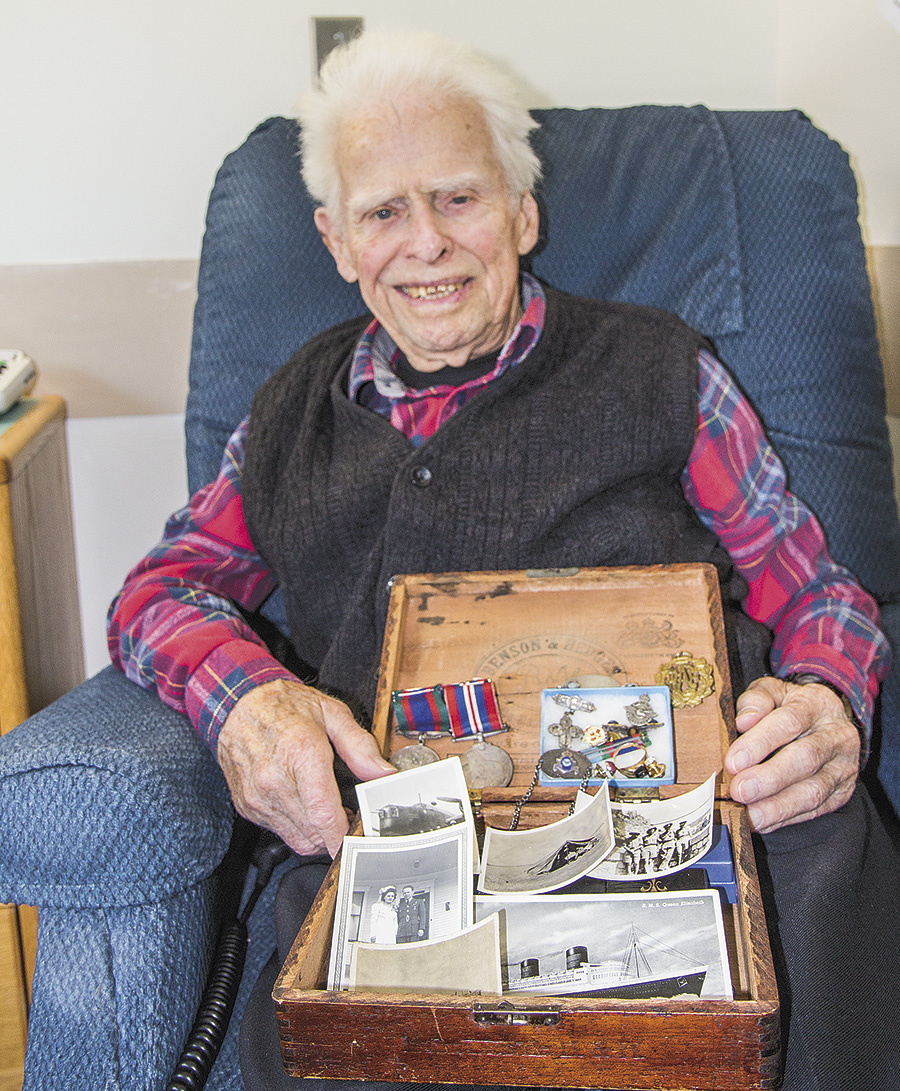
BOX OF MEMORIES – Norbert Boulet pulled out a box full of memories this week in his Bayside Personal Care Home room, as he recounted the story of his wartime service. Boulet, who turns 99 in January, moved from Somerset, Manitoba to Killarney’s Bayside in the spring of 2015.
JAY STRUTH/KILLARNEY GUIDE
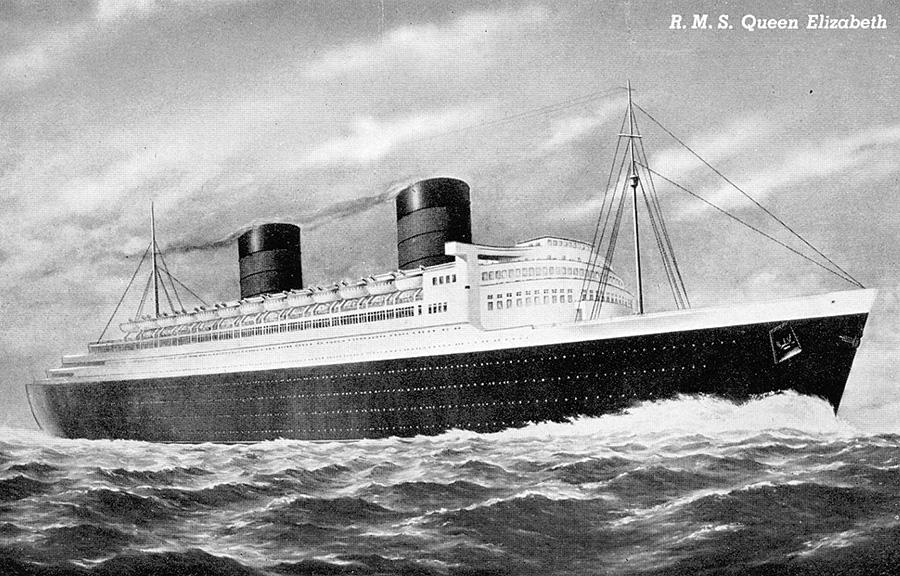
POSTCARD OF A QUEEN – Boulet purchased this postcard of a real beauty of a ship as he sailed on her to England to join the war effort.
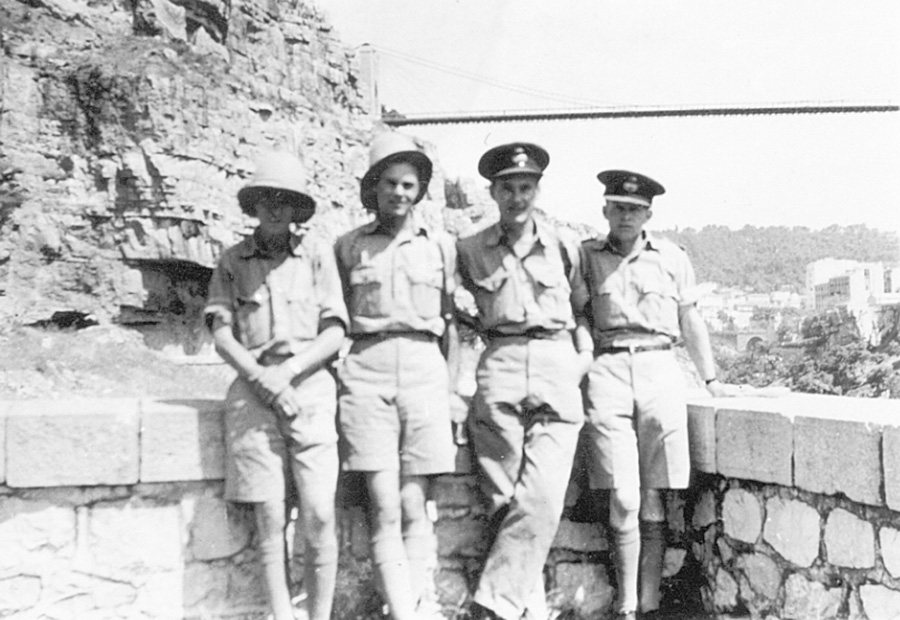
SNOWY OWLS IN SICILY – Boulet (right) stands with other members of the “Snowy Owl” Squadron in Sicily in June of 1943.
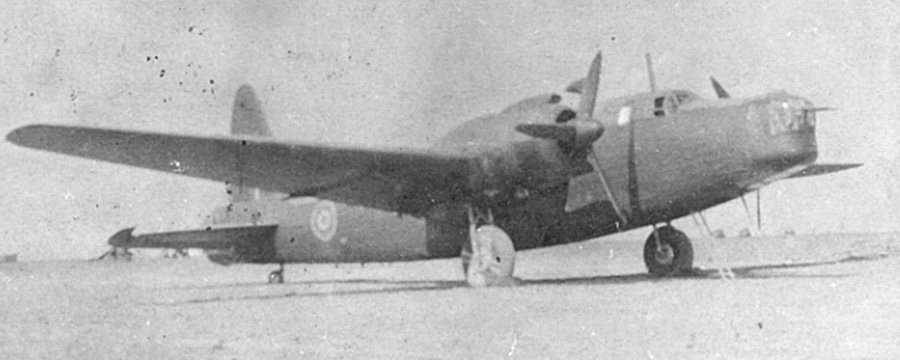
BOULET’S BOMBER – Squadron 420’s Wellington bomber at the ready.

TENT REFUGE – A tent provides shelter from the African heat in 1943.
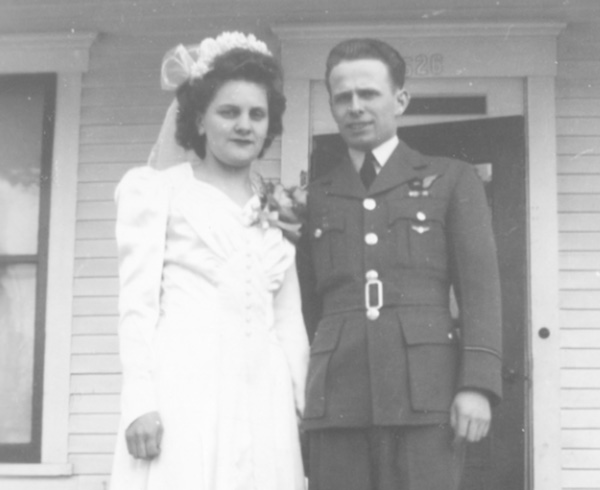
SETTLING DOWN – Norbert Boulet and his wife Gladys married in February of 1945, settling on a farm near Treherne and starting their family. They later moved to the Nesbitt area to farm. They had two sons and two daughters.

